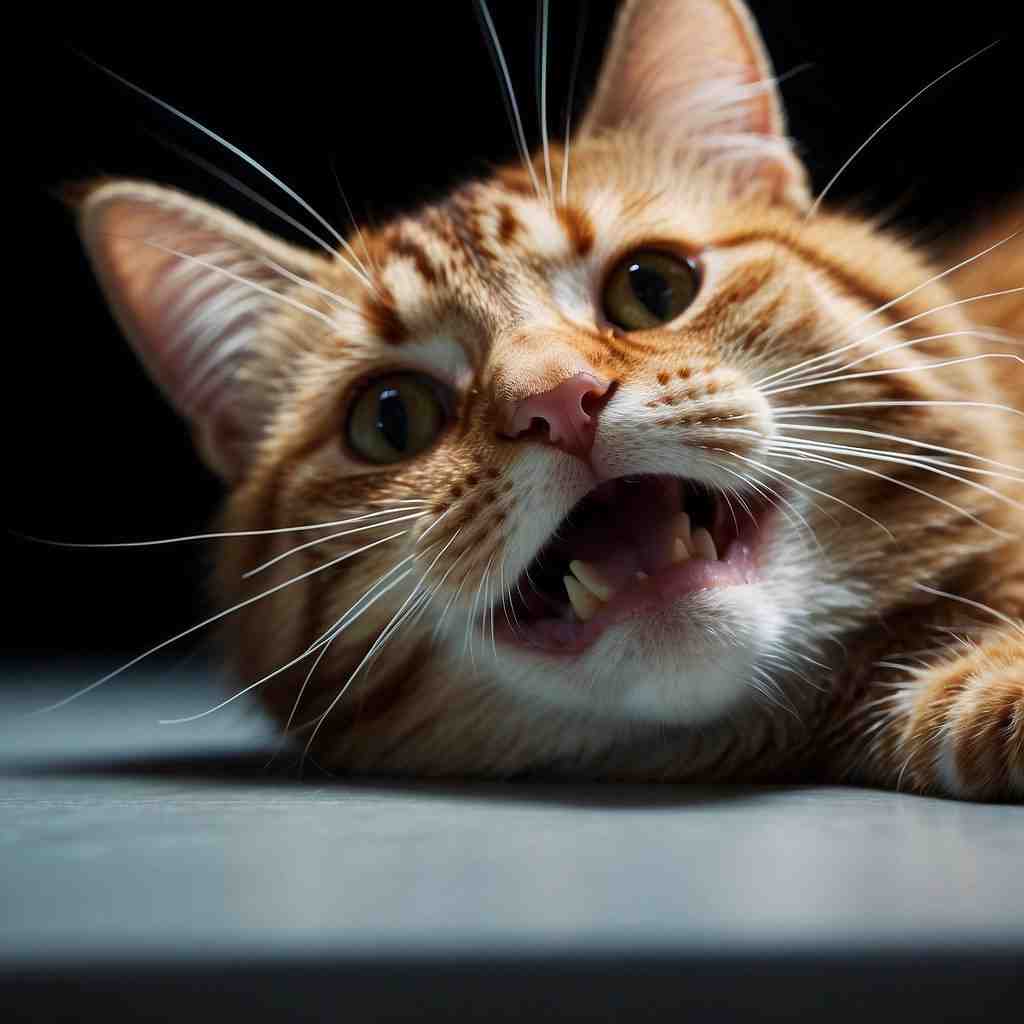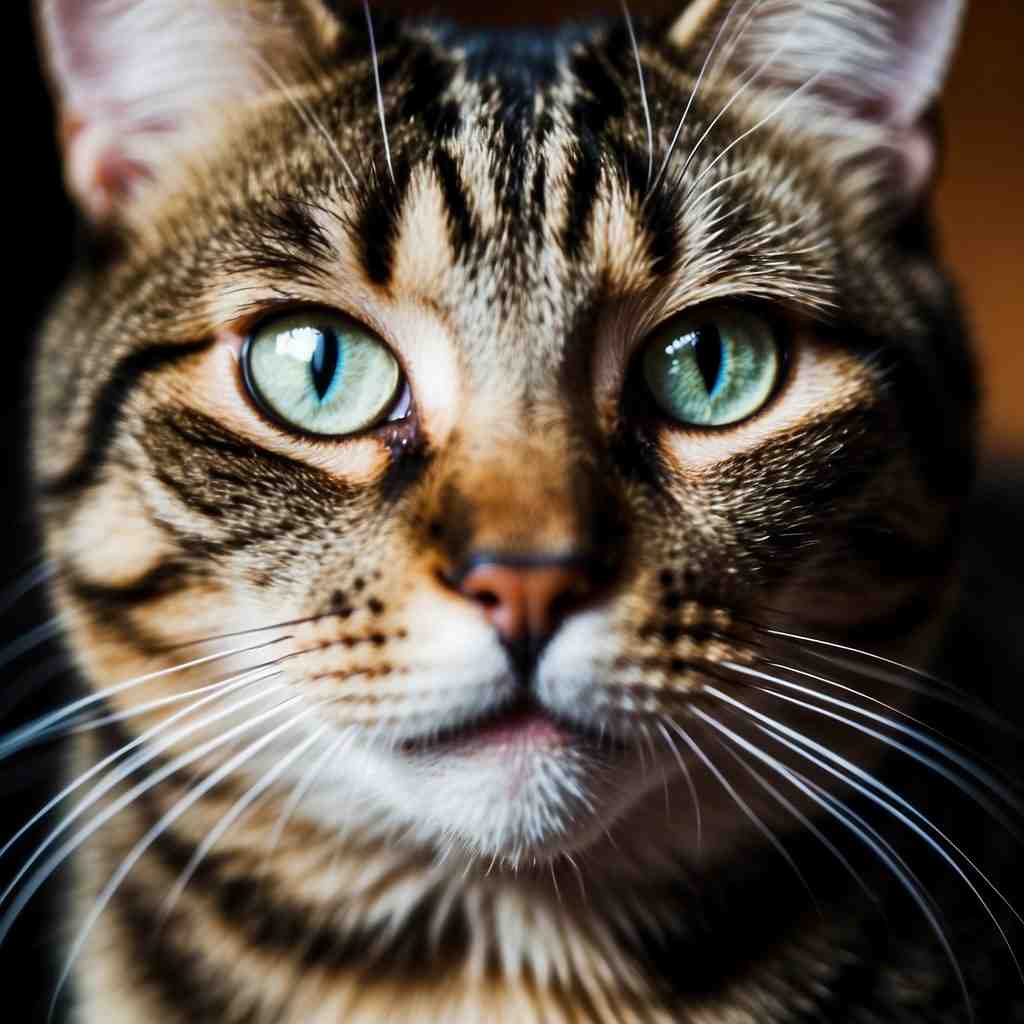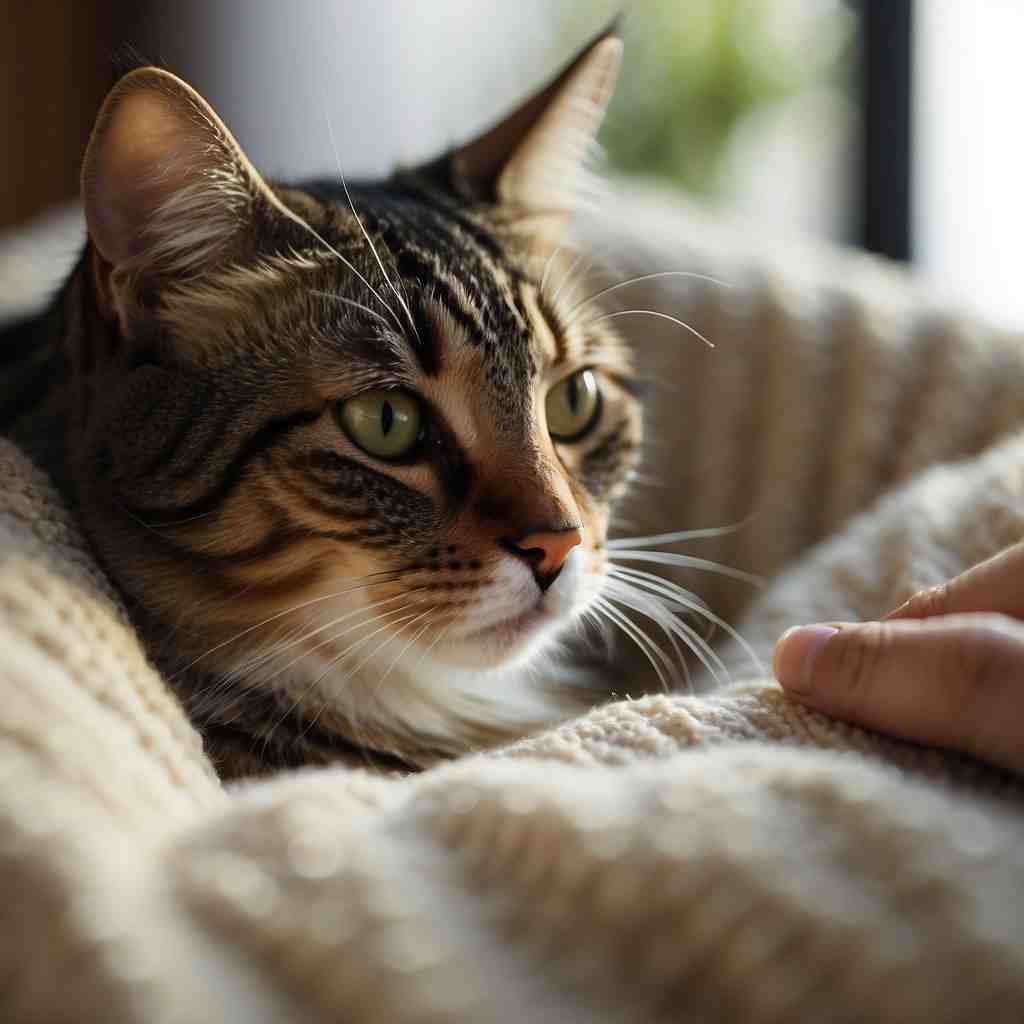Have you ever wondered about what happens if you cut a cat’s whiskers? Those are not just ordinary hairs; they are whiskers, a defining feature of your feline companion.
Whiskers, coarser and thicker than the other hair on the cat’s body, are made of keratin, just like human hair, which makes them feel familiar to the touch. (1)
However, they’re far from ordinary hair strands; these tactile hairs are deeply rooted in your cat’s body and are connected to a muscle that can move them back and forth.
Whiskers, also known as vibrissae, are thought to be as sensitive as human fingertips! What Happens If You Cut a Cats Whiskers?
Each whisker follicle stems a specialized hair that is your cat’s primary sense of spatial awareness as she makes her way through the world.
These whiskers are deeply rooted in the hair follicles, which are connected to sensory organs that help your cat detect changes in their environment.

Now, your cat’s whiskers are not just for show; they serve crucial sensory functions.
These vibrissae, as they are scientifically known, are sensitive to air currents and vibrations and can detect objects in the cat’s environment, aiding in spatial navigation.
This helps your cat gauge spaces, allowing it to slip through tight spots without a hitch.
Without their whiskers, cats can become disoriented, making these sensory tools, with special receptors at the ends of the whiskers, called proprioceptors, vital for their daily escapades and overall well-being.
Whiskers are used as radar sensors, detecting air movement and providing information about nearby objects and their speed.
This helps cats determine the size of small spaces and make precise jumps, especially when their cat’s eyes may not be able to focus on nearby objects.
Removing or trimming a cat’s whiskers, also known as facial whiskers, can harm their spatial awareness and stress levels.
Disturbance in this sensory system can lead to disorientation and can inhibit their ability to assess their surroundings accurately, potentially leading to injury.
Cats without facial whiskers often struggle to estimate the size of certain openings and face a loss of balance, meaning they’re far more likely to fall and hurt themselves.
Whiskers, also known as cat whiskers, are a remarkable adaptation, and maintaining their integrity is essential for the health and happiness of your pet, making whisker loss a serious concern for cat owners.
Key Takeaways
- Whiskers are deeply rooted keratin filaments vital for feline sensory perception.
- They play an essential role in navigating space and detecting changes in their surroundings.
- Cutting whiskers can lead to disorientation and stress, affecting a cat’s well-being.
What Happens if You Cut a Cats Whiskers
Let’s explore what happens if those crucial whiskers are trimmed:
Physical and Behavioral Consequences
- Disorientation: Whiskers are like feline radar, helping to navigate their surroundings. A cat can become disoriented with trimmed whiskers, leading to awkward bump-into-furniture moments! (2)
- Stress: Imagine losing your sense of touch; that’s what it’s like for them. This drastic change can cause considerable stress. (3)
- Caution and Anxiety: Cats rely on whiskers to judge space and distance. Without them, expect your cat to move with increased caution or show signs of anxiety. (4)
Myths vs. Facts
Myth: “Cut whiskers grow back stronger.” Fact: Not true at all! Whiskers grow back as they were – no upgrades here.
Myth: “Whiskers feel no pain when cut.” Fact: While it’s true that cutting them isn’t painful (whiskers aren’t like teeth!), it doesn’t mean it’s harmless.
Whiskers are deeply rooted in areas rich with nerves and blood vessels, making them key players in your cat’s sensory world.
Remember, your cat’s whiskers are dynamic sensory tools. Cutting them won’t enhance their functions, but it will certainly take away from your cat’s natural prowess.
Keep those scissors away and let your cat’s whiskers stay as majestic and practical as they were meant to be!
Real-life Experiences
Let’s peek into some real-life experiences of cat owners who’ve navigated this scenario:
- A Tale of Caution: One cat owner shared how their curious toddler snipped a section of their cat’s whiskers. Following the incident, their normally agile pet became noticeably clumsy, bumping into furniture and appearing visibly unsettled for several days.
- Disoriented Kitty: Another story from a forum described a cat who accidentally brushed against a candle flame, singeing its whiskers. The cat seemed to lose confidence in its jumping abilities and had difficulty assessing spaces it previously navigated with ease.
Now, how about something a bit more scientific? Consider this case study:
- Behavioral Changes: Max, a Domestic Shorthair, faced an unintended whisker trim during grooming. His owner reported subsequent changes:
- Before trimming: Active, confident with jumps, adept at navigating tight spots.
- Post-trimming: Reluctant to jump, hesitated at thresholds, increased clinginess.
Max’s behaviors are more than anecdotes; they suggest real consequences of whisker trimming, echoing the sentiments of other cat parents and providers.
Remember, whiskers are sensory tools for our feline friends, providing invaluable feedback about their environment. Their absence or even slight alteration can lead to a disoriented and stressed cat.
So next time you’re tempted to tidy up those whiskers, think about these stories and give your cat’s natural navigational aids the respect they deserve! Isn’t it clear that those whiskers are there for good reason?
Expert Insights and Veterinary Perspective

Here’s the scoop straight from the expert’s mouth:
- Dr. Joanna Woodnutt, a veterinarian, suggests that whiskers are a defining feature of cats, deeply connected to their spatial awareness. Trimming them could disorient your cat, akin to how you might feel if someone turned off the lights while you were walking in a familiar room.
From a medical standpoint, whiskers serve as tactile sensors, and cutting them can lead to:
- Confusion or Stress: Your cat relies on these vibrissae to navigate and measure openings. It’s like their natural ruler sticking out from their face. (5)
- Balance Issues: Whiskers help cats maintain their legendary grace and balance. (6)
- Reduced Eye Protection: Those whiskers above their eyes trigger blinking reflexes, guarding against debris. (7)
A study on whisker function reinforces their importance in feline health, showing how whiskers assist with hunting and environmental interaction.
Consider these vital roles whiskers play:
| Function | Description |
| Spatial Judgement | Assess the width of spaces and distance from objects. |
| Emotional Indicator | Reflects mood through positioning. |
| Safety Mechanism | Provokes blink reflex to protect eyes. |
| Enhances Hunting Precision | Detects movement and location of prey through air currents. |
When it comes to whisker care, it’s clear: leave those whiskers to do their thing. Your furry friend will thank you for it – probably not in words, but definitely with happy, confident purrs!
Recovery and Care Post-Clipping

Managing Accidental Whisker Damage
So, your cat’s whiskers have been clipped? Keep calm! Let’s make your furry pal cozy and get through this together. Here’s what you can do right away:
- Provide Comfort: Even if your cat seems okay, they’ll appreciate curling up in their favorite spot. Make their environment as stress-free as possible – think of it as their whisker-less wonderland!
- Feline-Safe Spaces: Stick to familiar indoor settings where they don’t need to rely on their now-missing sensors to navigate.
Here’s the lowdown on what to expect for their recovery:
- Regrowth Time: Don’t worry; those tactile hairs should start sprouting back within 2-3 months, and full recovery can take up to 6 months.
- Sensing the Change: Your cat might be a bit disoriented initially. They depend on those sophisticated whiskers for spatial awareness, so take jump and adventure levels down a notch.
Preventative Measures
“An ounce of prevention is worth a pound of cure,” especially when it comes to whiskers. Here’s how to keep those important hairs intact:
- Groom with Care: Always use cat-friendly grooming tools and steer clear of the whisker zone! Consider a no-go halo around those precious sense aids.
- Right Tools for the Job: No sharp scissors near the face, please! Opt for gentle brushes, and if it’s trim time for your kitty, leave the wriggling whisker area to the pros.
And remember, each whisker is a precious gift to your cat’s sensory collection.
Treat them like the wonder they are, and your cat will thank you with many happy, graceful leaps (once those whiskers have grown back, of course).
Keep an eye out, give lots of love, and embrace the quirks of a whisker-less life for a while.
However, it is important to note that certain breeds of cats may have different regrowth rates for their whiskers, so it is always best to consult with a veterinarian for preventative measures and proper care.
Enhancing Cat Wellness
Whisker health is crucial for your cat’s spatial awareness and overall well-being. Wondering how you can ensure those tactile hairs stay intact? Let’s dive into some Daily Care Tips and Alternatives to Clipping.
Best Practices for Whisker Health
Whiskers are a feline’s super-sensors, so how do we keep them sharp? Here’s what you need to know:
- Avoid Touching: Resist the temptation to fiddle with your cat’s whiskers. They are highly sensitive and can easily get irritated.
- Keep It Natural: Let your cat’s whiskers be. They’ll shed and regrow naturally, just like the fur on their coat.
- Check Regularly: While petting your pal, keep an eye out for any damage to their whiskers.
Got it? Let’s keep those whiskers as impeccable as your cat’s attitude!
Alternatives to Clipping
If grooming is on your mind, remember that whiskers should never be cut—literally!
- Gentle Combing: Use a soft-bristled brush for the fur on their face, avoiding whiskers.
- Scheduled Check-ups: Have your vet assess your cat’s whiskers during regular visits.
Remember, these sensory wonders are more than just adorable; they’re essential for navigation and mood. So, show them some love and let your cat strut their stuff, whiskers and all!
Quick Recap
Sensitive Navigation Tools: Your cat’s whiskers are like natural radars. They’re packed with nerve endings that help your kitty gauge their surroundings—imagine a built-in measuring tape!
Whisker Stress: Cutting them can lead to ‘whisker stress’. This can cause disorientation or make your cat feel less ”clued in” to their environment.
Growth Takes Time: Should an oopsie occur and whiskers get trimmed, expect a lengthy regrowth period. Patience is key, as they do grow back slowly.
Now, we’re not running a barbershop for cats, right? So, let’s keep those clippers away from the whiskers!
Ensuring your cat’s whiskers remain untouched, just like when you get a haircut, underlines our commitment to their well-being.
Keeping these tactile wonders intact allows your feline friends to confidently navigate and stay calm.
Remember, your pet’s comfort and safety come first, ensuring they remain the happy and agile creatures we adore. So take a moment today to appreciate those marvelous whisker wonders!
Frequently Asked Questions
Whiskers play an essential role in your cat’s spatial awareness and sensory perception. Let’s dig into some common questions you might have if your curious cat finds itself a whisker or two short.
Will my cat’s whiskers grow back if they’ve been accidentally trimmed?
Your cat’s whiskers will grow back if they’ve been accidentally trimmed.
Whiskers go through natural growth cycles, similar to hair, so give it some time and they’ll return to their former glory.
Is there any pain associated with cutting a cat’s whiskers for them?
While the whiskers aren’t innervated, they are deeply rooted in areas rich with nerves.
Cutting them doesn’t cause pain, but it can cause discomfort as whiskers are essential for your cat’s spatial navigation.
What are the potential consequences for a cat whose whiskers have been cut on one side?
If your cat’s whiskers are cut on one side, they may become disoriented.
Their ability to judge space on that side can be compromised, which might lead to mishaps like misjudging distances or bumping into objects.
What should I do if a groomer accidentally cuts my cat’s whiskers?
If a groomer accidentally cuts your cat’s whiskers, there’s no need for panic. Whiskers will regrow.
However, watch your cat for any signs of stress or disorientation and give them a little extra care while their whiskers come back.
How might a cat’s behavior or abilities be affected if it loses its whiskers?
Without whiskers, a cat may exhibit increased anxiety, and stress, or appear less able to navigate tight spaces.
They rely on their whiskers for environmental feedback, so losing them might make your cat slightly more clumsy until they grow back.
- Where to find the most trustworthy real money casinos - August 7, 2025
- Online Casinos That Approve PayPal: The Ultimate Overview - August 7, 2025


